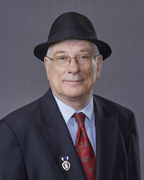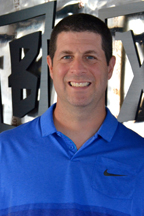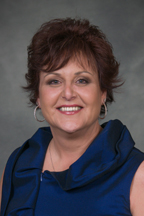Shift Your Sales Into Top Gear
Rev up prospects and longtime clients with these smart strategies
Whether it’s a predictable sales cycle or an economic downturn that stalls revenues, a promotional consultant’s bottom line can often take a hit. In the past decade, many of the nation’s biggest industries—housing, health care and energy among them—have suffered setbacks that effectively choked promotional products sales. Clients in stable industries can fall away, too, leaving consultants wondering how to breathe new life into their accounts.
So how can you move out of the slow lane and put the pedal to the metal? Read on to learn how three distributors maintain momentum when their clients’ business climates and marketing needs encounter business-altering change.
Bagwell Marketing---Dallas, Texas
Client Snapshot—Real Estate, Restaurants
While Bagwell Marketing has served many clients in the real estate business, owner and marketing consultant John Bagwell says having a solid base of clients in other markets helped minimize the impact of the housing market downturn, which rippled across the U.S. starting in 2008, causing housing values to plummet and wreaking havoc in the real estate industry. “Our No. 1 market is family restaurants,” he says. “It just happened that way. We also do a lot in the rent-to-own industry. We get a lot of referrals from satisfied customers.”
Sales Challenge—Growing The Bottom Line
“While we do retain a large number of our customers through the years, there certainly is turnover each year. That means we have to be continually looking for new customers. In the past we have been able to generate a reasonable number of sales with little effort. Loyalty, however, is hard to control. Because our relationship is largely by phone, it is easy to be become just another vendor and not a true partner.”
Top-Gear Strategy—Go Digital
”Ten years ago we made the decision at our promotional distributorship to go digital and drive all of our traffic through our website,” says Bagwell. “That created a business structure that no longer involved making sales calls but required using the website as a lead generation system.”
Bagwell points out that this type of program presents both positive and negative issues. “On the positive side we have an unlimited number of prospects, and people generally know what they want. We can sell anywhere in the world, and have sold promo items in Australia and the United Kingdom.
“On the downside, the internet customer also wants it in a hurry and expects someone to respond within minutes–not hours. There are also more distributors working websites and the competition has become greater. While we have been content to ‘pick the low-hanging fruit,’ we realize that we must do more to just stay even with last year’s sales,” he says.
To keep customers in the loop, Bagwell says his team has increased their social media presence and places additional advertising on the internet to drive traffic to the company website. “We also email and send postal mail to our customers. One of our most successful programs is to contact customers that purchased a product in the same month the previous year. For example, if they bought trade-show bags last October, there is a good chance they have that same event coming up again this year,” he says.
“It is doubtful we will ever go back to doing business the ‘old way,’ with cold calling and networking,” adds Bagwell. “We must be focused on getting new customers to our website.”
Q&A With John Bagwell
What are your clients’ most frequent uses for promotional products, and what items do they prefer using?
 We sell a lot of keychains with a house-shaped emblem (our No. 1 item); mostly they are gifts for their clients or for prospecting. We also sell a lot of Halloween bags (our No. 2 item) within this industry. Agents give those out, with their logo, at events and of course to customers and prospects . Our third most popular promo item in the real estate area is a giant Christmas stocking. This is usually for an agent office that has lots of traffic coming in to a fixed location. Sometimes they will donate it to a school or nonprofit. I know a lot of distributors don’t sell this product because it is a once-a-year purchase, but I have an 80-percent renewal rate each year on this. Calendars are, of course, always popular, along with door hangers, tote bags—even stadium cups for a special event.
We sell a lot of keychains with a house-shaped emblem (our No. 1 item); mostly they are gifts for their clients or for prospecting. We also sell a lot of Halloween bags (our No. 2 item) within this industry. Agents give those out, with their logo, at events and of course to customers and prospects . Our third most popular promo item in the real estate area is a giant Christmas stocking. This is usually for an agent office that has lots of traffic coming in to a fixed location. Sometimes they will donate it to a school or nonprofit. I know a lot of distributors don’t sell this product because it is a once-a-year purchase, but I have an 80-percent renewal rate each year on this. Calendars are, of course, always popular, along with door hangers, tote bags—even stadium cups for a special event.
What questions do you ask clients to help them select the appropriate products?
Most people who come to the website have a pretty good idea what they want. The real estate agent has already been searching the internet for house-shaped key chains, so they come ready to buy. We do try to cross-sell and ask what they are using the item for. Sometimes we are able to switch them to something that is a better fit, particularly if it is for an event. Sometimes we get someone who has no idea what they want, they just need something for an event. I’d say 75 percent are calling for a specific product.
What advice do you have for distributors who are stuck in a creative rut?
I would say the No. 1 thing you need to do is connect with new prospects and customers on social media. Find an industry that you can become an “expert” in, and grow your presence there. People always like to see what you have done for someone else in their industry, even if it is for a direct competitor. Network within your clients’ industries. I attend a hospitality meetup in Dallas. I’m always looking for ways to connect with people in the restaurant industry.
The IceBox, LLC—Atlanta, Georgia
Client Snapshot—Healthcare Professionals
The Pharmaceutical Research and Manufacturers of America, a trade group representing pharma companies, threw a wrench into the promotional products business in 2009 when it adopted a voluntary code of conduct restricting the use of promotional items within the industry. The trickle-down effect sent many distributors searching for new sales avenues, but The IceBox, LLC has maintained client relationships in the healthcare sector by focusing on other segments of the marketplace, says Chief Growth Officer Alex Rogow.
Sales Challenge—Spotting New Opportunities
“When the new PhRMA regulations came out, they didn’t affect our business so much that we had to reinvent who we were,” says Rogow. “We were fortunate because we had been focused on employees as brand ambassadors for pharmaceutical companies and hospitals, and not so much on the doctor giveaways. We always brought our creative strengths to employee engagement in health care. And, in the case of hospital systems, we worked to engage patients with fun and useful promotions.”
Top-Gear Strategy—Focus On Internal Opportunities
Rogow says his team doubled down on their efforts toward employees of pharmaceutical companies and healthcare organizations, using promotional products to engage, recognize and reward employees as well as support health-related campaigns like Go Red For Women.
Q&A With Alex Rogow
What are your clients’ most frequent uses for promotional products, and what items do they prefer using?
 We have focused on health and wellness for employees, offering products that help them lead an active and healthy lifestyle while being mindful of the environments they work within. These include fitness tracking technology, yoga mats, lunch packs so employees can make healthier meal choices, hot/cold packs for post-workout recovery and gym bags. For healthcare systems engaging patients, we recommend products with an antibacterial slant such as hand sanitizers, wipes and even pens.
We have focused on health and wellness for employees, offering products that help them lead an active and healthy lifestyle while being mindful of the environments they work within. These include fitness tracking technology, yoga mats, lunch packs so employees can make healthier meal choices, hot/cold packs for post-workout recovery and gym bags. For healthcare systems engaging patients, we recommend products with an antibacterial slant such as hand sanitizers, wipes and even pens.
What questions do you ask clients to help them select the appropriate products?
There are two ways to approach any opportunity—as a product seller and as a creative consultant. One client may say, “I want a water bottle”—that commoditizes what we do as creative professionals.
Our Creative Solutions Experts open a dialogue with our clients, asking questions such as “Who will receive the product? Why are they receiving it? When are they receiving it? How much are you spending?” We then offer our subject-matter expertise on the “what.” We never come back with a single idea, but several, to help achieve client objectives.
What advice do you have for distributors who are stuck in a creative rut?
Take yourself out of your daily grind. Go to a place that inspires creativity—a museum, eclectic neighborhoods, or a hike in the woods. I also find attending networking events for creatives and visual artists to be helpful. An example is Creative Mornings, a breakfast lecture series for the creative community, but really any creative marketing networking environment will allow you to interact and engage, and think differently. Lastly, don’t be afraid of failure. People who are afraid to fail often keep themselves from truly pushing their creativity.
HALO Branded Solutions—Sterling, Illinois
Client Snapshot—Oil And Gas Industry
Gas prices may have declined to reasonably comfortable levels, but what’s good for the consumer isn’t always good for the industry. The upstream portion of the oil and gas industry—offshore, drilling and exploration—has seen a considerable decline for several months. But it’s not all bad news, says Ginger Ales Hutter, a corporate branding specialist for HALO Branded Solutions, who is located in Mont Belvieu, Texas, 32 miles east of Houston. Oil was discovered in the area in the 1920s and the petrochemical industry remains a chief industry. Hutter says other areas in oil and gas are experiencing growth, especially transportation, pipelines, and refining and distribution.
Sales Challenge—Staying Top Of Mind With Struggling Clients
“Some of my clients are in all sectors, while others focus on one sector such as drilling,” says Hutter. “It’s true that we have had to make some concessions for a few of the hardest hit oil-and-gas clients, but I’m confident we will be rewarded with even more loyalty when their business rebounds.”
Top-Gear Strategy—Constant Communication
“Reaching out to clients on a regular basis is important,” says Hutter. “I prefer personal meetings, both formal and informal (coffee, lunch, etc.). They are the most effective for me because I have the client’s undivided attention.” Hutter says she takes advantage of vendor spec samples and uses them as an opportunity to get in front of prospects and current clients. “I send out weekly e-blasts, quarterly product mailings and participate in client-sponsored events. Social media sites like LinkedIn and Facebook are also good tools in keeping up with clients.”
Q&A With Ginger Ales Hutter
What are your clients’ most frequent uses for promotional products, and what items do they prefer using?
 Most of my oil and gas clients utilize promotional products in almost every aspect of their business: corporate branding, employee safety recognition, service award programs and e-commerce programs are usually implemented at the corporate level. However, there are a variety of site-specific projects and programs that are promoted on a regional or local level. They still recognize the power of promotional products and the value we have over other advertising in a time when their business is down and budgets are under heavy pressure. Wearables, tech products, tools and drinkware have been the most popular and are available within various price ranges.
Most of my oil and gas clients utilize promotional products in almost every aspect of their business: corporate branding, employee safety recognition, service award programs and e-commerce programs are usually implemented at the corporate level. However, there are a variety of site-specific projects and programs that are promoted on a regional or local level. They still recognize the power of promotional products and the value we have over other advertising in a time when their business is down and budgets are under heavy pressure. Wearables, tech products, tools and drinkware have been the most popular and are available within various price ranges.
What questions do you ask clients to help them select the appropriate products?
In order to recommend appropriate products to clients, it is important for me to have a really good understanding of their business philosophy, marketing strategies and corporate branding policies. If it’s a new client I usually go to their website and search on LinkedIn and Google to get as much information as I can about the company and their key management team. When working with clients on specific projects, events and programs, I usually ask them a series of simple questions before presenting any type of promotional products.
What advice or tips can you provide for distributors who are stuck in a creative rut?
Take advantage of all the creative resources available to you. Suppliers are a great resource. Attend national and regional promotional products shows, or contact some of your local supplier reps for ideas and inspiration. If you are affiliated with a large distributor, ask your peers to share some of their successful and creative marketing ideas and utilize any internal marketing tools your company offers. I also flip through industry magazines or surf internet sites such as Google and Pinterest to get my creative juices flowing.
Jen Alexander is associate editor for PPB.
Ask The Right Questions To Build The Right Promotion
Ensure your clients select the best products for their promotion or program by asking questions like these, suggested by Ginger Ales Hutter of HALO Branded Solutions:
- What is the name or theme of the project, program or event?
- Why are you implementing this project or program, or participating in this event?
- What are you trying to achieve?
- When is the event?
- Where will the project or event take place?
- Who will be receiving the product(s)? Who is your end user?
- What is your budget?
- How many items are you considering?
- What quantities of each item are you considering?
- How will the promotional product(s) be distributed?

